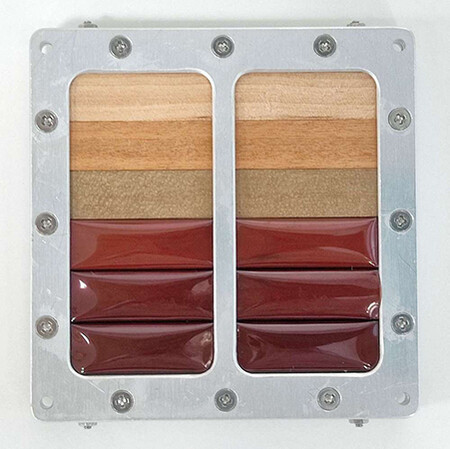It’s no secret that the space industry is growing by leaps and bounds. As ever larger and more powerful spacecraft are developed to go back to the Moon and even visit Mars, rocket and satellite launches continue to increase. The expansion of human presence beyond Earth seems to be an exciting reality, but it comes with environmental risks.
In these times, different initiatives have been launched, such as the United Nations SDGs, which seek to protect the planet from the devastating effects of climate change, and which call for the commitment of citizens, industries and governments. In this sense, space agencies such as The NASA, the ESA and the JAXA They have recognized the importance of redesigning their practices in order to achieve sustainability.
A grain of sand in terms of sustainability
Despite the fact that there is still a long way to go, there are several projects that aim at the sustainability of the space sector. In Japan, Kyoto University, think throw artificial wooden satellites may be a valid solution for this purpose. But his idea has not stayed on paper, rather he has been working for years to find out if this material from trees can be useful in outer space.
The house of studies did several laboratory tests that showed that certain woods can withstand temperatures between -150 and 150 degrees Celsius. They also found reasonable values of deterioration under vacuum conditions. With this base, its researchers took a very important step in 2020: they sent different types of wood to the International Space Station (ISS) to evaluate them in a real environment.
Module with wood sent to the ISS
The astronaut Koichi Wakata was in charge of supervising the resistance tests and structural analysis of a module with wood specially designed to be exposed in outer space. Surprisingly, the material did not present degradation or deformations, with no detectable signs of detachment or damage to the surface layer. Thus, the previously studied properties were confirmed.
The University of Tokyo explains that three types of wood were tested, and that after the good results of the experiment, it is one step closer to taking its proposal to the next level. In 2024, in collaboration with NASA, the Japanese Space Agency (JAXA) will launch into space a satellite possibly made of magnolia wood or “hoonoki” in Japanese, for its material stability and great resistance.
From the laboratory they highlight the virtues of this new alternative. They point out that wood, being a natural, economical and carbon based it is “considerably more sustainable in production” than other advanced materials. In addition, it presents benefits when it comes to giving rise to its final destination, since a complete elimination is expected on its re-entry to Earth, without “harmful by-products”.

As explained by NASA, the satellites are usually built with elements of titanium, aluminum, nickel and gold (not in all cases). Portions of these structures may survive re-entry and reach the Earth’s surface. The progress shown by the Japanese researchers so far is certainly promising, but some details remain to be learned. With the passage of time we will know them.
Images: Kyoto University
In Xataka: We have spent years measuring earthquakes on Mars to realize something: its core is not like ours











